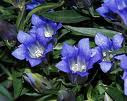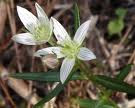:::::::::::::::::::::::::::::::::::::::::::::::::::::::::::::::::::::::::::::::::::::::::::::::::::::
The North American Saijiki Project
Maybe in 100 years time, we might celebrate the
Great American Haiku Heritage Saijiki!
(I invented this word in September 2007.)

North America is a large continent, comprising
Canada, the United States and Mexico, politically.
The World Kigo Database is trying to establish saijiki for different regions of it.
Rather then struggeling with unfamiliar Japanese kigo,
go ahead and pick up your local regional items !
If you want to introduce your own region in greater detail, please feel free to contact me to establish your own area saijiki. It takes time and effort and then more time, but maybe, you are onto something.... The Japanese Saijiki was not written in one week either ... smile ..
Gabi Greve
:::::::::::::::::::::::::::::::::::::::::::::::::::::::::::::::::::::::::::::::::::::::::::::::::::::
The most general collection of kigo for North American here:
World Kigo Database : Kiyose for Northern America
Regional Saijiki:
World Kigo Database : Alaska Saijiki
World Kigo Database : Canada Saijiki .. SAIJIKI Canadiens
World Kigo Database : Chesapeake Bay Saijiki
World Kigo Database : Florida Saijiki
World Kigo Database : New England Saijiki
With many Memorial Days, Holidays and other Observances
World Kigo Database : Oklahoma Saijiki
The Southwest of North America
Prairie : North American Prairie Saijiki
World Kigo Database : Sierra Nevada
World Kigo Database : Sonoran Saijiki
:::::::::::::::::::::::::::::::::::::::::::::::::::::::::::::::::::::::::::::::::::::::::::::::::::::
External LINKs
(let me know yours for registration !)
THE FIVE HUNDRED
ESSENTIAL JAPANESE SEASON WORDS
Selected by Kenkichi Yamamoto
Translated by Kris Young Kondo and William J. Higginson
source : haikai/renku
Haiku Society of America (est. 1968) - HSA
http://www.hsa-haiku.org/
HSA Regional Chapters
Washington / Plains and Mountains / Midwest / Northeast New England / Oregon / Southwest / South / Southeast / Northeast Metro / California / Alaska / Mid-Atlantic
Hawaii/Pacific
With extensive info about the regional members.
source : www.hsa-haiku.org/regions
Boston Haiku Society
http://www.bostonhaikusociety.org/
Haiku Northwest
http://hometown.aol.com/WelchM/Haiku-Northwest.html
Haiku Oregon
http://haikuoregon.wordpress.com/2012/03/18/welcome-to-haiku-oregon/
New Orleans Haiku Society (NOHS)
http://www.geocities.com/neworleanshaiku/nochsa.html
Haiku Poets of Northern California
http://members.aol.com/_ht_a/welchm/hpnc.html
North Carolina Haiku Society Blog
http://nc-haiku.blogspot.com/
Haiku Poets of Northern California
President: Garry Gay
http://haiku-poets-northern-california.com/
Haiku San Diego Blog
steering committee: Billie Dee,,Seretta Martin,,Naia,,Megan Webster
http://haikusandiego.blogspot.com/
2010 Southern California Haiku Study Group Anthology
Billie Dee, editor
Central Valley Haiku Club, California
w. f. owen, President
http://hometown.aol.com/lstparker/CVHC.html
Southern California Haiku Study Group Blog
With many kigo for the monthly haiku meetings.
http://socalhaiku.blogspot.com/
Kigo Lists for Southern California Billie Dee
Spring.....Summer.....Autumn.....Winter
BACKKUP ... Kigo Lists for Southern California
Yuki Teikei Haiku Society
http://www.youngleaves.org/
San Francisco Bay Area Nature Guide and Saijiki
Patrick Gallagher , Anne M. Homan, Patricia J. Machmiller
A combination of field guide and haiku; beautiful photographs and art accompany descriptions of seasonal occurances of natural phenomena and human activities in the San Francisco Bay Area. Each element is accompanied by haiku that evoke an emotional or spiritual aspect of the human interaction with the natural world.
September 2010
. . . . . Test Reading at LULU publications
Red Moon Press was founded in 1993.
Our goal is to continue to publish the best in English-language haiku from around the world.
Red Moon Press / Jim Kacian
The Haiku Foundation (THF)
Jim Kacian
. The Haiku Foundation, troutswirl BLOG
July 2010
NaHaiWriMo - National Haiku Writing Month
Michael Dylan Welch.
source : site/nahaiwrimo
now features a lot of regional haiku groups.
Please check the HSA facebook page for further information.
source : www.facebook.com/HaikuSocietyOfAmerica
:::::::::::::::::::::::::::::::::::::::::::::::::::::::::::::::::::::::::::::::::::::::::::::::::::
heat lightning --
all the way into Mexico
the mountains rise
Michael McClintock
The Heron's Nest, II:5
.................................................................................
Some kigo and topics
of the Southern California Season Word List
Chinese lantern festival
Cinco de Mayo
El Dia de los Muertos
Election Day (Nov)
Festival of Books
French Open
Kwanzaa
National Poetry Month
Oscar awards
Summer Shakespeare
Tamales
:::::::::::::::::::::::::::::::::::::::::::::::::::::::::::::::::::::::::::::::::::::::::::::::::::
Some kigo and topics
of the World Kigo Database
Amisch, Amish, Amish Mennonites
Amstrong, Lance Armstrong road racing cyclist
Appleseed, Johnny Appleseed, John Chapman (1774 - 1845)
Baseball and related kigo
"Best of the year" list, 10 best list
Big Sur, California
Blue Ridge Mountains
Breast Cancer Awareness Month (BCAM)
Bridges in the USA
Bay Bridge San Francisco
Brooklyn Bridge New York
Golden Gate Bridge, San Francisco
Bumbershoot festival Seattle, Washington
Cape Fear, North Carolina
Challenger Space Shuttle
Chickadee, Poecile atricapillus
Corn shucking, corn husking
Cracker Jack
Crane Canyon Regional Park, California
Cowboys Blanket Dallas, Texas
Dulicmer "hog fiddle"
Eastwooding, Cling Eastwood
Evening Snow - Linanthus dichotomus
Family Day
Folsom Street Fair and Festival San Francisco
Fourth of July, Independence Day
Geoduck clam (Panopea generosa)
Girl Scout cookies
Haboob, sandstorm Arizona
Houston, Whitney Houston (1963 – 2012)
Indian paintbrush (Castilleja)
Jackie Robinson Day USA
Jazz Music
Labor Day, Labour Day September
Lakota Sioux People
La Paloma - song
Liatris, Blazing-Star
Mallomars chocolate cookies New Jersey
Martin Luther King, Jr. Day
Meadowlark - state bird of Wyoming
Milkweed (toowata 唐綿)
Mockingbird
National Gallery of Art, Washington,D.C.
New York - places
Obama, Barack Obama
Redwing - Turdus iliacus
Rimrock, cliff formations
Robin, American Robin (Turdus migratorius)
Rhode Island : WaterFire
Scouting for Food
Snow, Phoebe Snow
Taku Winds, Alaska
Tax paying season, income tax
Texas Bluebonnet (Lupinus texensis)
Tex-Mex food Texas, Mexico
Tipi teepee, Lakota tent
Tule fog California
Washington, George Washington (1732 - 1799)
Yukon River
:::::::::::::::::::::::::::::::::::::::::::::::::::::::::::::::::::::::::::::::::::::::::::::::::::
[ . BACK to WORLDKIGO . TOP . ]
:::::::::::::::::::::::::::::::::::::::::::::::::::::::::::::::::::::::::::::::::::::::::::::::::::::































